Advertisements
Advertisements
प्रश्न
In ΔABC, AB = AC and the bisectors of angles B and C intersect at point O.
Prove that : (i) BO = CO
(ii) AO bisects angle BAC.
उत्तर
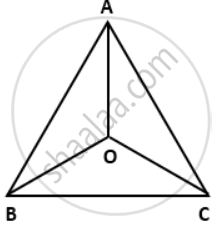
In ΔABC,
AB = AC
⇒ ∠B = ∠C ...( angles opposite to equal sides are equal )
⇒ `1/2 ∠"B" = 1/2∠"C"`
⇒ ∠OBC = ∠OCB ...[ ∵ OB and OC are bisectors of ∠B and ∠C respectively, ∠OBC = `1/2∠"B" and ∠"OCB" = 1/2∠"C"` ] ...(i)
⇒ OB = OC ...( Sides opposite to equal angles are equal ) ...(ii)
Now, in ΔABO and ΔACO,
AB = AC ...( given )
∠OBC = ∠OCB ...[ from(i) ]
OB = OC ...[ from(ii) ] ...( proved )
∴ ΔABO ≅ ΔACO ...( by SAS congruence criterion )
⇒ ∠BAO = ∠CAO ...( c.p.c.t. )
⇒ AO bisects ∠BAC ...(proved)
APPEARS IN
संबंधित प्रश्न
In the given figure, AC = AE, AB = AD and ∠BAD = ∠EAC. Show that BC = DE.
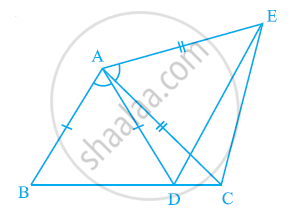
In right triangle ABC, right angled at C, M is the mid-point of hypotenuse AB. C is joined to M and produced to a point D such that DM = CM. Point D is joined to point B (see the given figure). Show that:
- ΔAMC ≅ ΔBMD
- ∠DBC is a right angle.
- ΔDBC ≅ ΔACB
- CM = `1/2` AB
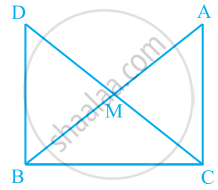
In the given figure, ABC is an isosceles triangle whose side AC is produced to E. Through C, CD is drawn parallel to BA. The value of x is
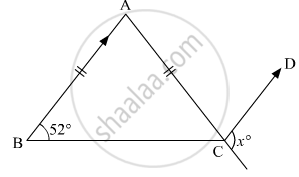
D, E, F are the mid-point of the sides BC, CA and AB respectively of ΔABC. Then ΔDEF is congruent to triangle
ABCD is a parallelogram. The sides AB and AD are produced to E and F respectively, such produced to E and F respectively, such that AB = BE and AD = DF.
Prove that: ΔBEC ≅ ΔDCF.
In the parallelogram ABCD, the angles A and C are obtuse. Points X and Y are taken on the diagonal BD such that the angles XAD and YCB are right angles.
Prove that: XA = YC.
In the following diagram, ABCD is a square and APB is an equilateral triangle.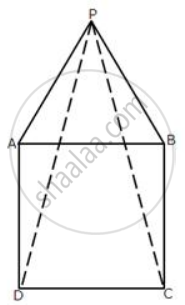
(i) Prove that: ΔAPD ≅ ΔBPC
(ii) Find the angles of ΔDPC.
In the following figure, OA = OC and AB = BC.
Prove that: ΔAOD≅ ΔCOD
In the following figure, AB = EF, BC = DE and ∠B = ∠E = 90°.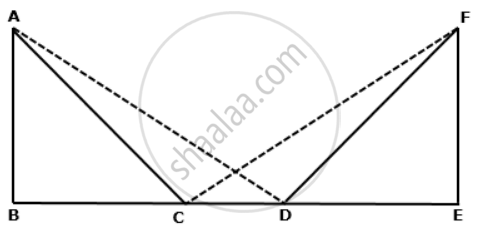
Prove that AD = FC.
Which of the following is not a criterion for congruence of triangles?
